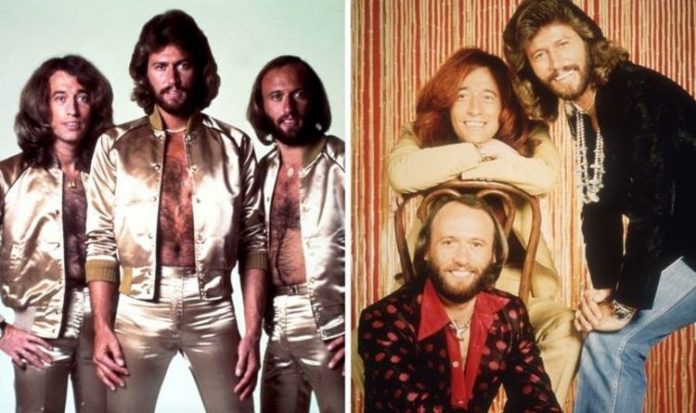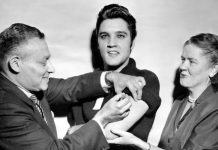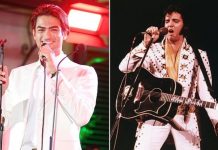The Bee Gees was a band which emerged in the 1960s and is known for its tight harmonies and, later, its disco numbers. The band began singing skiffle and rock ‘n’ roll, with Barry Gibb using his baritone range, before their falsetto became its best-known quality. While the Bee Gees’ music changed its line-up did not – so who was in the band?
Who was in the Bee Gees?
The Bee Gees is one of the original bands of brothers – meaning the trio were all related.
The eldest was Barry Gibb, who was born on September 1, 1946, who was the second child in the family.
He had an elder sister, Lindsey, and was followed by twins Robin and Maurice Gibb, born on December 22, 1949.
READ MORE: Is Die Hard on over Christmas 2020? How to watch festive classic
After this the youngest Gibb was born – Andy – who was born on March 5, 1958.
While there were other Gibb siblings, it was the middle three boys who gained success as The Bee Gees.
The band was formed in 1958, the year Andy was born, after trying to make it as part of the skiffle band The Rattlesnakes from 1955.
Soon, by 1957, the boys’ harmonies had begun to take form, The Rattlesnakes broke up and the boys formed Wee Johnny Hayes and the Blue Cats, with Barry becoming Johnny Hayes.
After the family emigrated to Australia, they were picked up by promoter Bill Goode, who along with DJ Bill Gates helped the band to find their new name as The Bee Gees.
Up until 1967, the group had minor successes until they finally got signed with Polydor Records after The Beatles manager Brian Epstein passed on their tapes.
The early line up of the band was not just the boys, but also included Vince Melouney and Colin Petersen.
The group continued to soar in the charts after gaining favour with certain DJs and influential people, until Vince left the band and, soon, in 1969, Robin left the group after feeling their new manager, Robert Stigwood, favoured Barry as the frontman.
DON’T MISS
The trio of Barry, Maurice and Colin continued to perform until Colin was reportedly fired from the band, and Maurice sought to release a solo album.
Barry’s solo album, like Maurice’s, was not released, while Robin had a small level of success, meaning in 1970 the band reformed with the Gibb brothers and new drummer Geoff Bridgford.
They had some success on their reformation but, by the mid-1970s, their music was not gaining much interest, and soon they started working with a soul producer for their next few songs.
This was the beginning of The Bee Gees’ disco era, which they became known for, as well as their strong falsetto voices.
This was cemented when they recorded songs for the Saturday Night Fever soundtrack, which became a huge hit for them.
Barry told The New Yorker: “They flipped out and said these will be great. We still had no concept of the movie, except some kind of rough script that they’d brought with them…
“You’ve got to remember, we were fairly dead in the water at that point, 1975, somewhere in that zone—the Bee Gees’ sound was basically tired. We needed something new.
“We hadn’t had a hit record in about three years. So we felt, Oh Jeez, that’s it. That’s our life span, like most groups in the late ’60s.
“So, we had to find something. We didn’t know what was going to happen.”
After having a few years of major success, but the mid-1980s things were difficult again for the band, which was only made worse when their youngest brother, Andy, who had been trying his hand and the music business, died on March 10, 1988, at age 30.
They continued to perform together for some time, as well as releasing solo projects, until Maurice died on January 12, 2003, of a heart attack, aged 53.
This was a real shock to the group and they stopped performing for a time, until 2009 when they began making appearances on TV shows such as Strictly Come Dancing.
In 2012, after being diagnosed with liver cancer in 2011, Robin died on May 20, aged 62.
Barry has made some solo music and continues to perform occasionally.




